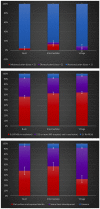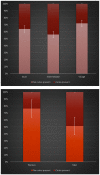Oral health in transition: The Hadza foragers of Tanzania
- PMID: 28296885
- PMCID: PMC5351833
- DOI: 10.1371/journal.pone.0172197
Oral health in transition: The Hadza foragers of Tanzania
Abstract
Conventional wisdom holds that a decline in oral health accompanies the transition from hunting and gathering to agriculture, given increased consumption of carbohydrates. This widely touted example of the mismatch between our biology and modern lifestyle has been intuited largely from the bioarchaeological record of the Neolithic Revolution in the New World. Recent studies of other populations have, however, challenged the universality of this assertion. Here, we present the first comprehensive study of oral health among a living population in transition from the bush to village life, the Hadza hunter-gatherers of Tanzania, to test the hypothesis that the shift from foraging to farming, or agricultural intensification, inevitably leads to increased periodontal disease, caries, and orthodontic disorders. Our results showed that women living in villages consuming a mostly agricultural diet exhibited more caries and periodontal disease than those living in the bush consuming a mostly wild-food diet. Furthermore, men living in the bush consuming mostly a wild-food diet had more than those living in the village consuming a mostly agricultural diet. These findings are explained by the high incidence of maize consumption in village settings, along with previously recognized variation in rate of caries between men and women. The unexpected discovery of high caries incidences for men in the bush is likely explained by heavy reliance on honey, and perhaps differential access to tobacco and marijuana. These data support the notions that mechanisms of cariogenesis are multifactorial and that the relationships between oral health and the shift from a predominantly wild-food diet to one dominated by cultigens are nuanced.
Conflict of interest statement
Figures
Comment in
-
Oral Health Key to Understanding Humanity's Past.J Calif Dent Assoc. 2017 Jun 22;45(6):278. J Calif Dent Assoc. 2017. PMID: 29016086 No abstract available.
References
-
- Leverett DH. Fluoride and the changing prevalence of dental caries. Science. 1982; 217:26–30. - PubMed
-
- Hillson S. Recording dental caries in archaeological human remains. Int J Osteoarchaeol. 2001; 11: 249–289.
-
- Larsen CS. Bioarchaeology: Interpreting Behavior from the Human Skeleton. Cambridge UK: Cambridge University Press; 2015.
-
- Strużycka I. The oral microbiome in dental caries. Pol J Microbiol. 2014; 63: 127–135. - PubMed
MeSH terms
LinkOut - more resources
Full Text Sources
Other Literature Sources
Medical




